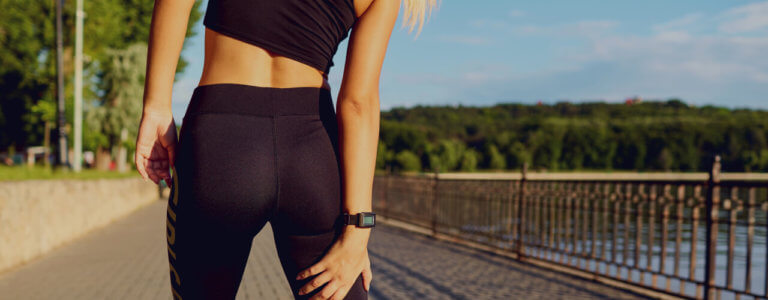If unfortunately, you have suffered from an accident or an injury, your legs will tend to get weak due to less usage. Visiting a physical therapist in these tough times might prove to be difficult because of covid. One can make use of in-home physical therapy in such cases. It has proven to be more convenient for the patients and the recovery rates have been high. Regaining the strength of legs is an important phase of recovering from leg injury.Not being adequately hydrated, diabetes, pinched nerves also contributes to leg weakness, muscle spasms, numbness and pain. The physiotherapy exercises for leg weakness targets the major muscles of the legs.Do not forget to connect with your physical therapy for body assessment before starting any sort of physical therapy exercise.
Let us go through some physiotherapy exercises for leg injury. Also, use a yoga mat while performing these exercises.
1. Glute sets
A very simple and easy way to strengthen your hips is to exercise your glutes. It will enhance the blood circulation to your hips and legs. You can perform glute exercises by following the steps given below.
- Lay on your back and bend your knees on a fifteen degree angle.
- Raise your buttocks slightly off the floor and tighten your muscles.
- Hold this position for approximately five seconds.
- Relax your buttocks.
- Repeat this procedure ten times.
- Do three sets a day.
You can change the number of repetitions depending on what your body allows. If this exercise gives you immense and unbearable pain then stop doing it and contact your physical therapist immediately.
2. Hamstring sets
The purpose of your hamstring muscles is to help you in bending your knee and extending your hips backwards. Strengthening your hamstring muscles is an important step for you to get back to walking normally. Follow the given instructions to perform an easy hamstring exercise.
- Lay down on your stomach.
- Raise your leg backwards about ten to twelve inches.
- Gently lower your leg back to the floor.
- Repeat ten to fifteen times.
- Do three sets every day.
3. Quad sets
Quadricep muscles are four muscles located at the front end of your thigh. Their job is to assist you in lifting your hips and extending your knees. Given below is the procedure to perform the simplest quad exercise which is leg raises.
- Lie on your back.
- Bend the knee of the uninjured leg to ninety degrees by keeping the other leg straight and flat on the ground.
- Gently lift your weaker leg 12 inches off the ground.
- Maintain this position for ten seconds and gently place your back to the ground.
- Repeat this exercise ten to fifteen times or as your body permits.
- Do three sets each day.
4. Tandem balance exercises
Tandem balance exercise has helped older adults in enhancing overall mobility, function and mental health while decreasing discomfort. To do this exercise:
- First of all, stand with one foot infront of the other in a heel to toe position.
- Second, maintain this position for twenty seconds.
- Now, switch feets.
If you need an assistive device such as crutches for standing, then you should pass on this exercise. This exercise is best performed under the supervision of a physical therapist if you have trouble standing.
5. Heel raises
People with calf spasms experience decreased calf strength and reduced balance. Strong calves improve balance and help prevent falls. To perform this physical therapy exercise do the following.
- First of all, stand with your feet shoulder length apart.
- Second of all, slowly raise your heel off the ground.
- Thirdly, gently lower your heel back to the ground.
- Repeat ten times or as directed by your physical therapist.
6. Aerobic exercises
Perform low impact aerobic exercises during rehabilitation. These exercises include walking, stationary cycling and water aerobics. Do these physiotherapy exercises five days a week for about thirty minutes.It will help improve blood flow and leg strength. Aerobic exercises also reduces risk of various symptoms such as:
- Obesity
- Heart disease
- High blood pressure
- Type 2 diabetes
- Metabolic syndrome
- Stroke and certain type of cancer
Walking helps in decreasing the risk of osteoporosis. Keep in touch with your physical therapist to learn what exercises suit your body requirements the most.
7.Other things you can do
There are various other things you can do to increase your leg function. Such things are:
- Drinking 64 ounces of water daily without fail.
- Applying heat can be very useful in loosening the muscles during a spasm.
- If your balance weakness or pain worsens, your affected body part might feel cold as compared to the rest of your body. Contact your physical therapist or doctor in such cases.
- You can also opt for yoga if you have frail lower limbs.
- Tai-chi is an exercise for older people that will help in enhancing muscular strength, improving balance and posture.

